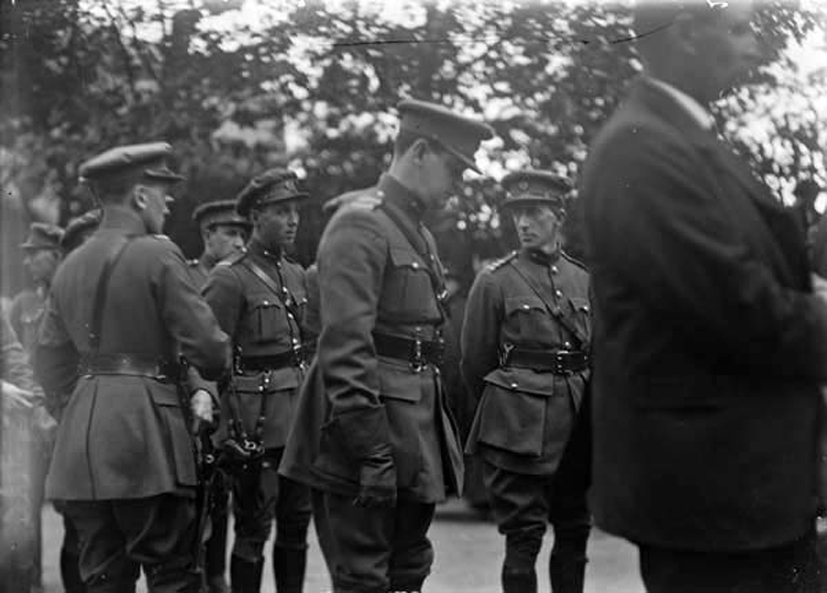Thousands pay their respect as President Griffith laid to rest in Glasnevin Cemetery
Dublin, 17 August 1922 – The state funeral of the late President of Dáil Éireann, Arthur Griffith took place in Dublin yesterday.
A High Mass was celebrated by the Archbishop of Dublin, Edward Byrne, at the Pro-Cathedral in the city. Over 200 clergy were present, as well as government officials and representatives of various foreign governments, local municipalities, the universities, the army, the judiciary, the arts and national organisations and societies.
After the mass the mourners walked in procession to Glasnevin Cemetery. As a mark of respect to the late president, the government issued an order that all their departments remain closed until 2pm and it was also requested that businesses in the city should do likewise and that banks remain shut between the hours of noon and 2pm. These requests were followed.
The typical hum of industry was stilled as tens of thousands of people came out onto the streets to pay their respects, many of them taking up their positions hours before the cortêge passed.
The chief mourners were Arthur’s widow, Maud and son Nevin, who was dressed in traditional Irish costume, and daughter Ita, as well as his brothers and sisters. They were followed by members of the Dáil, by representatives of the army including Michael Collins, Commander in Chief, and Richard Mulcahy, the Chief of Staff.
Members of the Civic Guard were present in their new uniforms as were members of the Dublin Metropolitan Police. It was, as one commentator noted, the first time the DMP had taken part in such an event – ‘the nation’s admission that they are of us and for us, no longer the unwilling instruments of a foreign system.’ Postmen also walked in uniform.
The route took them past the Nassau Street headquarters of Éamon de Valera’s party where the tricolour has flown at half-mast for the last three days, and later the procession passed outside Mountjoy Prison where Mr Griffith was jailed a little over a year ago. As the hearse passed the prison, officers and men of the prison guard saluted the remains.
In Glasnevin, as the coffin was being lowered, the vast congregation recited the Benedictus and after final prayers were said and the grave covered, 50 members of the National Army fired three volleys in the air and the ‘Last Post’ was sounded.
Alderman W.T. Cosgrave paid the last tributes to Mr Griffith. He remarked that Mr Griffith’s name and work would be a lesson and an inspiration to those who came after him.
‘This great man laboured for 30 years to achieve that which he scarcely lived to see. The work to which he set his hand was a work which, in time, attracted the attention and the support of the nation by reason of the earnestness, the sincerity, and the selflessness of the efforts that he put in order to achieve the destiny of the nation which gave him birth.’
British Pathé footage of the funeral of the president of the Irish Free State Army Arthur Griffith in 1922
[Editor's note: This is an article from Century Ireland, a fortnightly online newspaper, written from the perspective of a journalist 100 years ago, based on news reports of the time.]





















